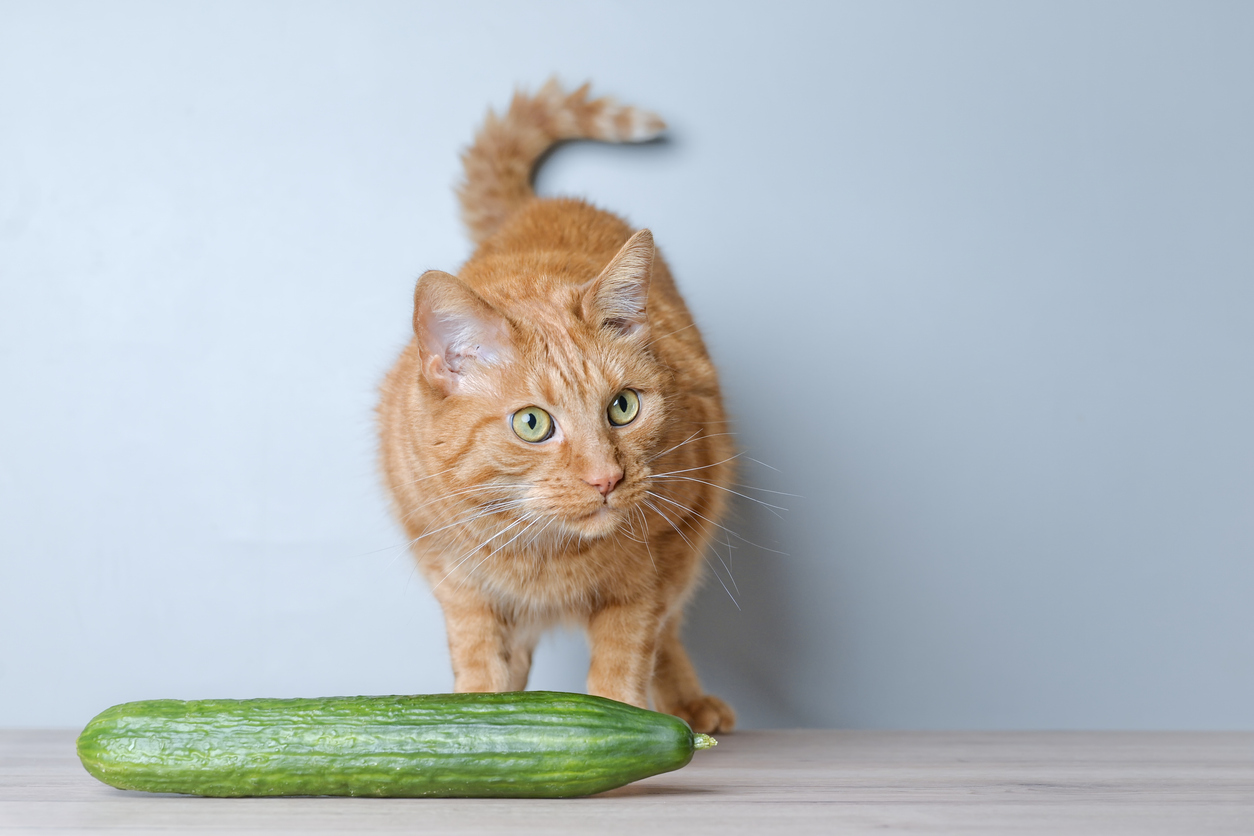Cats are known for their quirky and often mysterious behaviors. One particular phenomenon that has intrigued pet owners and experts alike is their apparent fear of cucumbers. In this comprehensive article, we delve into the psychology of our feline friends to uncover why cucumbers elicit such a startling response.
The Startling Effect: Sudden Movements and Surprise
Evolutionary Instincts and Defense Mechanisms
Cats are natural predators, but they are also prey to larger animals. This dual role has shaped their behavior over millennia, making them highly alert and sensitive to sudden changes in their environment. When a cucumber is placed behind a cat without its knowledge, the sudden appearance triggers an instinctive startle response. This reaction is a defense mechanism, honed by evolution to help them escape potential threats.
The Role of Peripheral Vision
Cats have excellent peripheral vision, which helps them detect movement and potential danger from various angles. However, when something appears unexpectedly in their blind spot, it can cause a shock. The placement of a cucumber behind a cat exploits this blind spot, leading to an exaggerated response when the cat turns around and suddenly sees the object.
The Shape and Color: Mimicking Natural Threats
Resemblance to Snakes
One popular theory is that the shape and color of cucumbers resemble snakes, natural predators of cats. Snakes pose a significant threat to many animals, including cats, which have an innate fear of these reptiles. The sight of a cucumber, with its elongated form and green hue, might trigger this deep-seated fear, causing the cat to react defensively.
Visual Similarity and Immediate Danger
The visual similarity between a cucumber and a snake can prompt an immediate flight response. Cats are hardwired to avoid snakes due to the risk they pose, and this instinctual reaction ensures their survival. When confronted with what they perceive as a snake, cats choose to flee rather than investigate, resulting in the dramatic jumps and sprints we often observe.
Environmental Factors: Stress and Anxiety
Sensitivity to Changes in Their Surroundings
Cats thrive in stable environments and can become stressed by sudden changes. Introducing an unfamiliar object, like a cucumber, into their space can increase their anxiety levels. This stress, combined with the surprise element, can amplify their reaction.
The Role of Stress in Behavioral Responses
High-stress levels can lead to exaggerated behavioral responses in cats. When already on edge, a sudden, unexpected event can push them into a state of panic. Understanding this aspect of feline psychology helps explain why the presence of a cucumber can cause such a dramatic reaction.
Practical Advice for Cat Owners
Avoiding Unnecessary Stress
While it might be amusing to see a cat jump at the sight of a cucumber, it is important to consider the animal’s well-being. Repeated exposure to stress can have long-term negative effects on a cat’s health. We advise against intentionally scaring your pet and instead focus on providing a safe and comforting environment.
Creating a Safe Space
Cats need safe spaces where they can retreat and feel secure. Ensure that your home has plenty of hideaways and elevated areas where your cat can observe their surroundings without feeling threatened. Maintaining a predictable and stable environment can help reduce anxiety and promote a sense of safety.
The upshot:
Understanding the reasons behind a cat’s fear of cucumbers involves a deep dive into their evolutionary instincts, sensory perceptions, and environmental stressors. By recognizing these factors, we can better appreciate the complex nature of feline behavior and work towards making their environment safer, more comfortable and ultimately, understanding our kitties just a little bit better!
Yours in Paws,
The PawPaw Team

